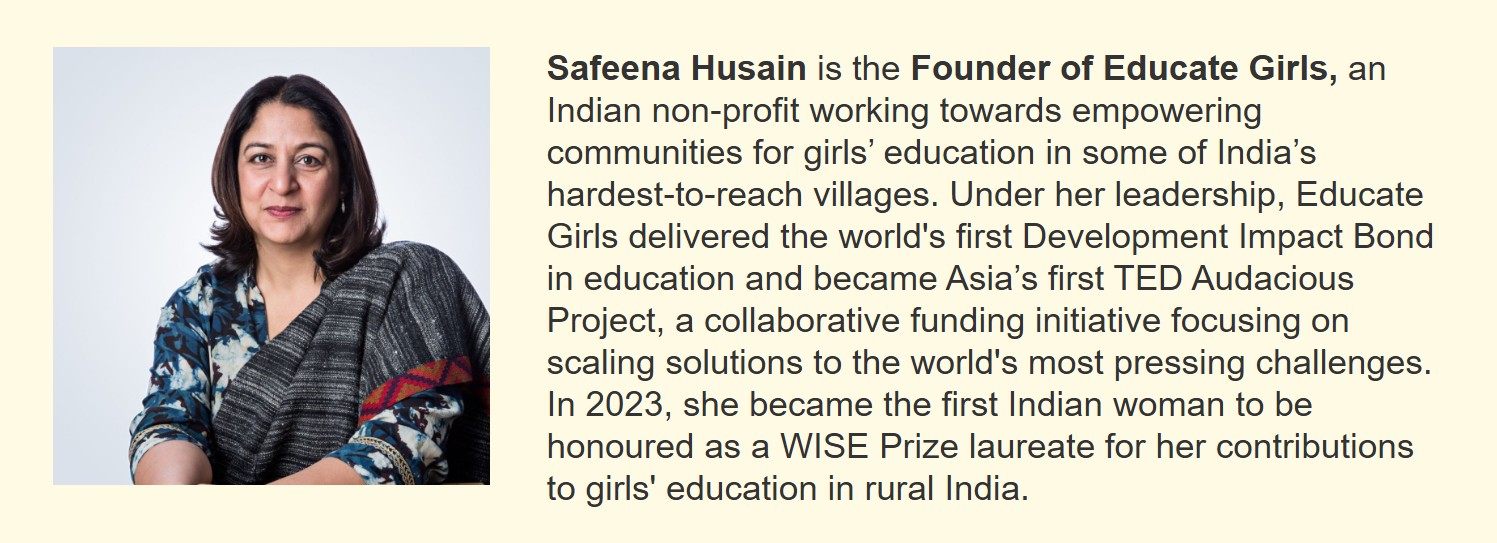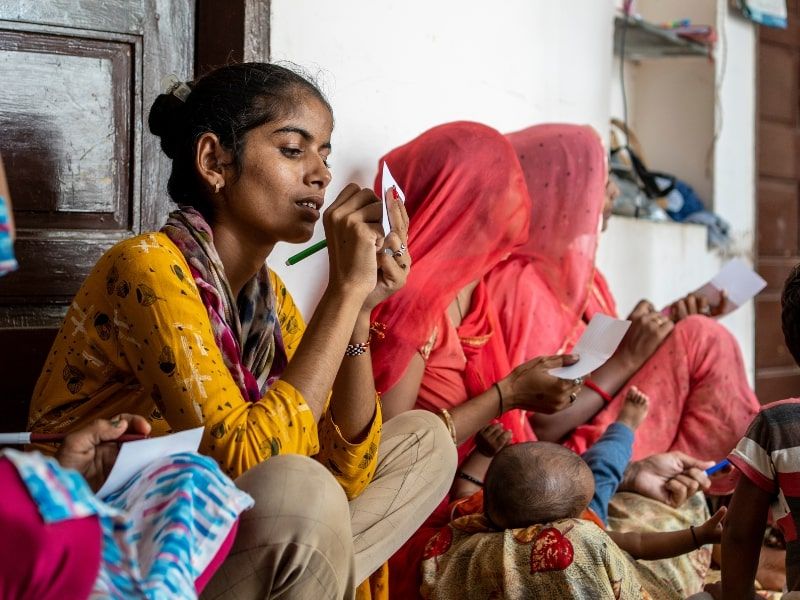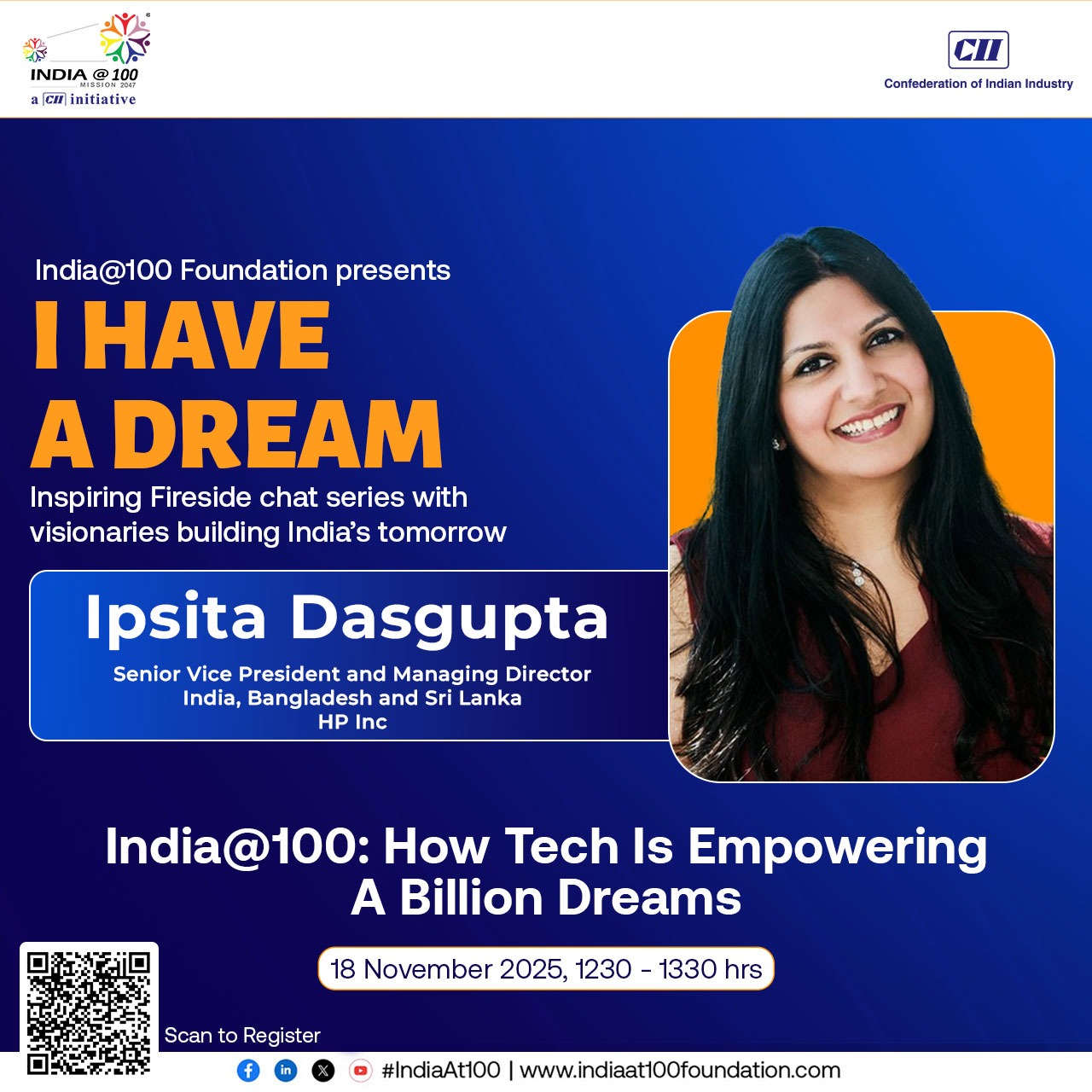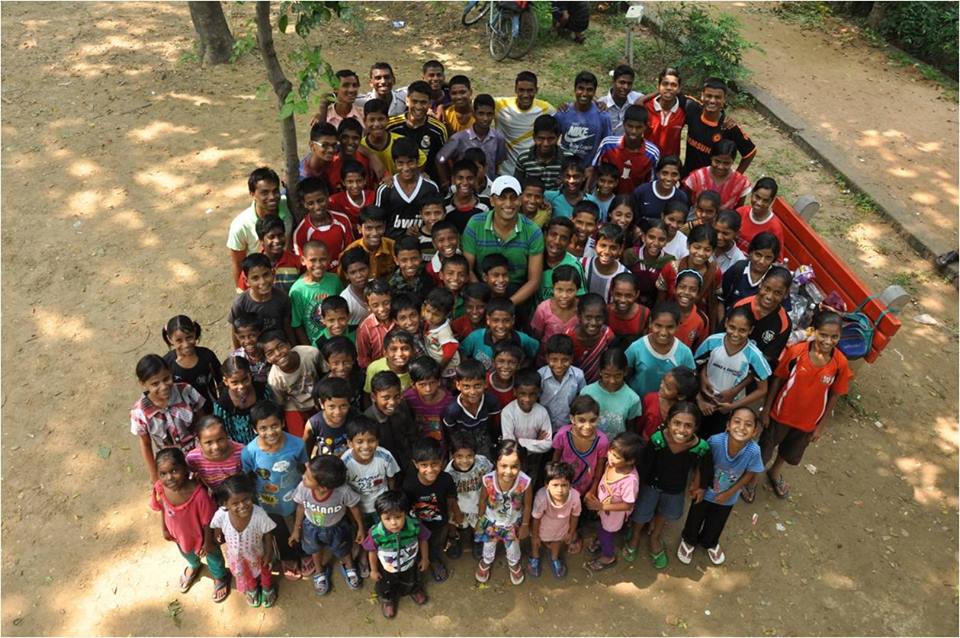
What inspired you to embark on this journey to change the landscape of girls’ education in India?
It was a powerful realisation that got me started. My father came to visit me when I was setting up a small health clinic in a village near Mussoorie. The women in that village asked him how many children he had. “This is it. She is the only child!” he said. Their faces fell, as if having a daughter was a tragedy. They told him he was young and should try for a son. That stuck with me. I couldn’t stop thinking about their daughters being seen as less than their sons, seen as liabilities not worth educating. And this hit home hard because I had a three-year interruption to my own education and almost did not return to education. But I got a second chance. I went on to study at the London School of Economics and work globally with underserved communities in South America, Africa and Asia before returning to India. I realised then that my education had given me choices and a voice. It made me deeply aware that millions of girls in India are never given that chance at all.
So, in 2007, I started Educate Girls as an extension of my personal journey and to solve the problem of girls’ education by giving girls the same chance I got. We are dedicated to mobilising rural, remote communities for girls’ education and focusing on the toughest areas, where the burden of the problem is highest. We began as an idea, 18 years ago, in some 50 villages in Pali, Rajasthan. Since then, by leveraging community and government resources,
we have helped bring nearly 2 million girls back to school and improve the learning outcomes of over 2.2 million children across 30,000 villages.
What are the biggest cultural and societal barriers to girls’ education, and what strategies have proven most effective in overcoming them?
We see two sets of barriers that keep girls from education: societal and systemic. Societal barriers—such as poverty and patriarchy—hold girls and women back, leading to early school dropouts, child marriage, and prioritisation of household chores and caregiving. Life shocks, including caregiving duties, can disrupt their education. These challenges are compounded by systemic barriers that trap girls in lives without agency or independence. Adolescent girls feel this more acutely as they transition from elementary to secondary and higher secondary education.
In a vast country like India, with nearly 700,000 villages, the data shows that for every 100 primary schools, there are only about 60 middle and 26 high schools. For many girls, continuing their education becomes impractical or risky, contributing to high dropout rates as they move through the system. While alternative pathways like the National Institute of Open Schooling and State Open Schools exist, much remains to be desired.
But the most entrenched barrier is the patriarchal mindset that permeates everything: a deeply rooted belief system that values girls less than boys. This mindset sees a goat as an asset and a girl as a liability. Changing this is not easy. Mindset and behaviour change is a slow burn: gradual, trust-based, and requiring sustained effort.
In partnership with state governments and powered by thousands of community-based volunteers and gender champions, Educate Girls runs two holistic, community-led programs. Vidya, our Back to School program, identifies out-of-school girls (aged 6–14), enrols and retains them in school, and improves foundational literacy and numeracy for all children in Grades 3–5. Pragati, our Second Chance program, supports adolescent girls and young women (aged 15–29) ineligible for formal schooling to develop academic and life skills, build agency, and return to education through government state open schools to complete their 10th and 12th grades.

India’s development sector thrives on passion and integrity, and innovative funding models are key to driving greater impact. How has the World’s first Development Impact Bond (DIB) in Education helped improve educational outcomes, and what are its broader implications?
In 2015, when scaling rapidly, we were worried that scale may lead to a loss of quality. We did not want to simply replicate our program but ensure the same quality of delivery to the millionth girl. This led to the creation of the world’s first Development Impact Bond (DIB) in education, which tied funding directly to outcomes.
We were evaluated on two key metrics: enrolment and learning. At the end of the three-year term, a third-party evaluator found we had exceeded our targets, achieving 116% of our enrolment goal for out-of-school girls and 160% of our learning. The overall learning gain in the final year alone was equal to an additional year of schooling for a child.
The success of piloting the first DIB in education demonstrated not just the feasibility of a results-based model but the importance of a data-driven approach. We realised what was working and wove it into our operational fabric. During the DIB, our data revealed that 70% of out-of-school girls in Bhilwara, the DIB’s focus area, were concentrated in just 7% of the villages. This prompted a deeper analysis, and broader extrapolation confirmed a similar pattern: 40% of out-of-school girls across India were concentrated in just 5% of villages.
With this insight, we expanded strategically, moving from one state during the DIB phase to four: Rajasthan, Madhya Pradesh, Uttar Pradesh, and Bihar. This targeted expansion helped us reach more out-of-school girls faster and return them to education.
What is your vision for an inclusive and empowered India@100, and how can education be a catalyst in achieving it?
I believe education is the ‘silver bullet’ that can solve some of the world’s most pressing problems and is an undeniable catalyst for change. This truth is distilled in the words of Nagina Bano (our community volunteer from Pali). Nagina Bano was a tortured and abandoned child bride. She used her education to survive and build a future for herself and her children. She told me, “My education is the only thing that is truly mine. No one can beat it out of me, no one can steal it, no flood, no famine can take it away, my education will be with me till my dying day.”
For India@100, I envision a nation where our country sees sons and daughters as equals! They are valued, invested in, and celebrated just like boys. Girls’ education and agency would be the norm, not a struggle. Over the next few decades, tech-enabled, flexible education pathways must deliver learning that is accessible, affordable, and relevant—meeting every girl where she is, regardless of geography or circumstance. Education systems must adapt to her needs, offering mobile classrooms, online skill modules, and community-based solutions that support lifelong learning.
At Educate Girls, our 10-year goal is to reach 10 million learners by bridging infrastructure gaps and driving large-scale impact through partnerships with communities, governments, philanthropists, and technology.
What advice would you give to young women or aspiring social entrepreneurs who want to make a meaningful difference in the education sector?
I suggest thinking long-term with a problem-solving lens rather than a project lens. Start by understanding the realities on the ground. Leverage what already exists, including community programs, government schemes, and resources.
Build ownership within the community that can champion the cause with empathy and cultural insight. Remember, change does not come from the outside in. For it to be sustainable, it must come from within, led by local voices.




